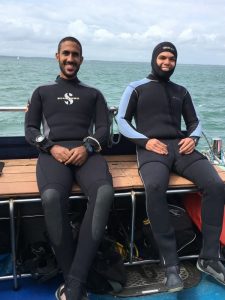Museum Week is an international online event that is running from 19th to 25th June 2017. Organised in collaboration with UNESCO, the Museum Week is a chance for heritage institions across the world to share and talk about our passion for heritage with the public through social media. This year we are celebrating equality by dedicating the Museum Week to all women in the world.
The Maritime Archaeology Trust will be sharing with you our take on Museum Week. In collaboration with the Shipwreck Centre and Maritime Museum on the Isle of Wight we will be looking through their collections and bring you artefacts and histories that are linked in with the theme of the day.

The Little Mermaid by E.S. Hardy, 19th century painting. Source: https://fineartamerica.com/featured/little-mermaid-e-s-hardy.html
The Thursday theme is, STORIES!
We have a special one for you today! There are probably very few people in the world who haven’t heard about the myth of mermaids. But did you know that in the Victorian period “real” mermaids were sold as collectables?
The myths of the mermaids and mermen date back as far as 1000 BC. The Assyrian legends told of a queen who accidentally killed her lover. In despair she threw herself into the sea to transform into a fish but the water only transformed half of her body and as such she became half fish and half human.
Stories of similar creatures can be found across the world. In Africa the legend of Mami Wata, a powerful water spirit, sometimes takes the shape of a mermaid. She is not too dissimilar from the legends of European mermaids (think HC Andersen’s “The Little Mermaid”). Interestingly the legend of the mermaid Lasirn in the Caribbean has resemblance to both the African and European legends. We also find records of mermaid stories and sightings from the American, Inuit, Indonesian, Australian and Japanese cultures.

A “Feejee merman” can be found in the collection at the Shipwreck Centre and Maritime Museum on the Isle of Wight. Image credits: The Shipwreck Centre and Maritime Museum
The collectable mermaid hoax has been around for centuries. However, the most famous version was created by an American conman, P.T. Barnum, in 1842. Known as the “Feejee mermaid”, it was said that this mermaid corpse had been caught near the Fiji islands in the South Pacific. In actual fact the head of the “mermaid” was of a monkey while the tail was from a fish. Put together and dried out it does make for a quite convincing deep-water creature. During the Victorian period people would buy these “mermaids” as collectables from their trips. Especially in Japan this became a very popular thing to sell to the tourists. The “Feejee mermaid” is now often referred to as the Japanese monkey-fish.
When you visit the Shipwreck Centre and Maritime Museum on the Isle of Wight be sure to check out the “Feejee mermaid” we have in our collection!


